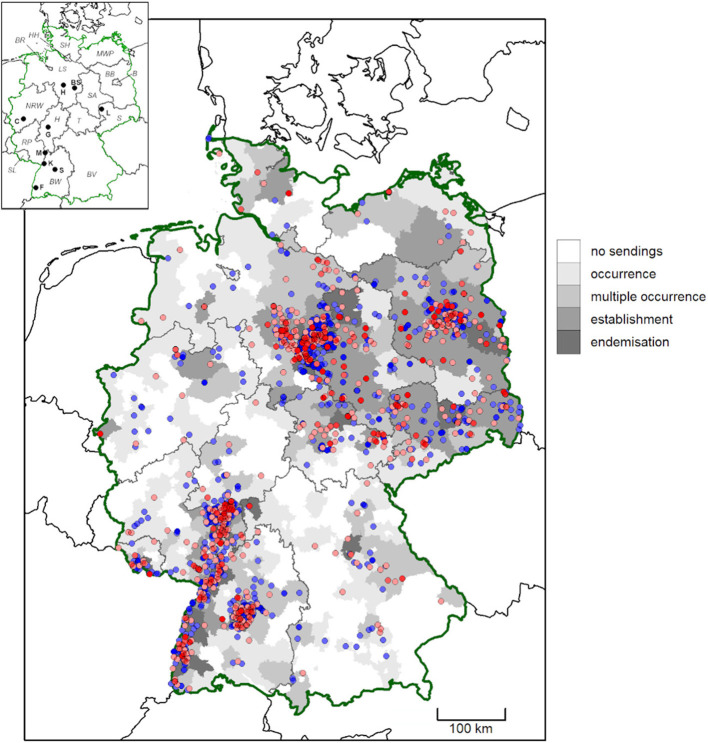Figure 1.
Geographic origin of D. reticulatus submissions from German citizens between February 2019 and May 2021. Districts are shaded according to evidence for tick occurrence (single tick/location), multiple occurrence (2–5 ticks/location), establishment (>5 ticks/location) and endemisation (>5 ticks/location, from multiple years). High and medium accuracy records are depicted as dots. Locations previously published by Drehmann et al. (10) are shown in blue, while new records are shown in red. More intense colors indicate multiple findings in close proximity. In the map insert, federal states are abbreviated with italic letters (B, Berlin; BR, Bremen; BW, Baden-Wuerttemberg; BV, Bavaria; BB, Brandenburg; HH, Free and Hanseatic city of Hamburg; H, Hesse; LS, Lower Saxony; MWP, Mecklenburg-Western Pomerania; NRW, North Rhine-Westphalia; RP, Rhineland-Palatinate; S, Saxony; SA, Saxony-Anhalt; SH, Schleswig-Holstein; SL, Saarland; T, Thuringia) and cities with bold letters (BS, Brunswick; C, Cologne; F, Freiburg; G, Gießen; H, Hanover; K, Karlsruhe; L, Leipzig; M, Mannheim; S, Stuttgart).

